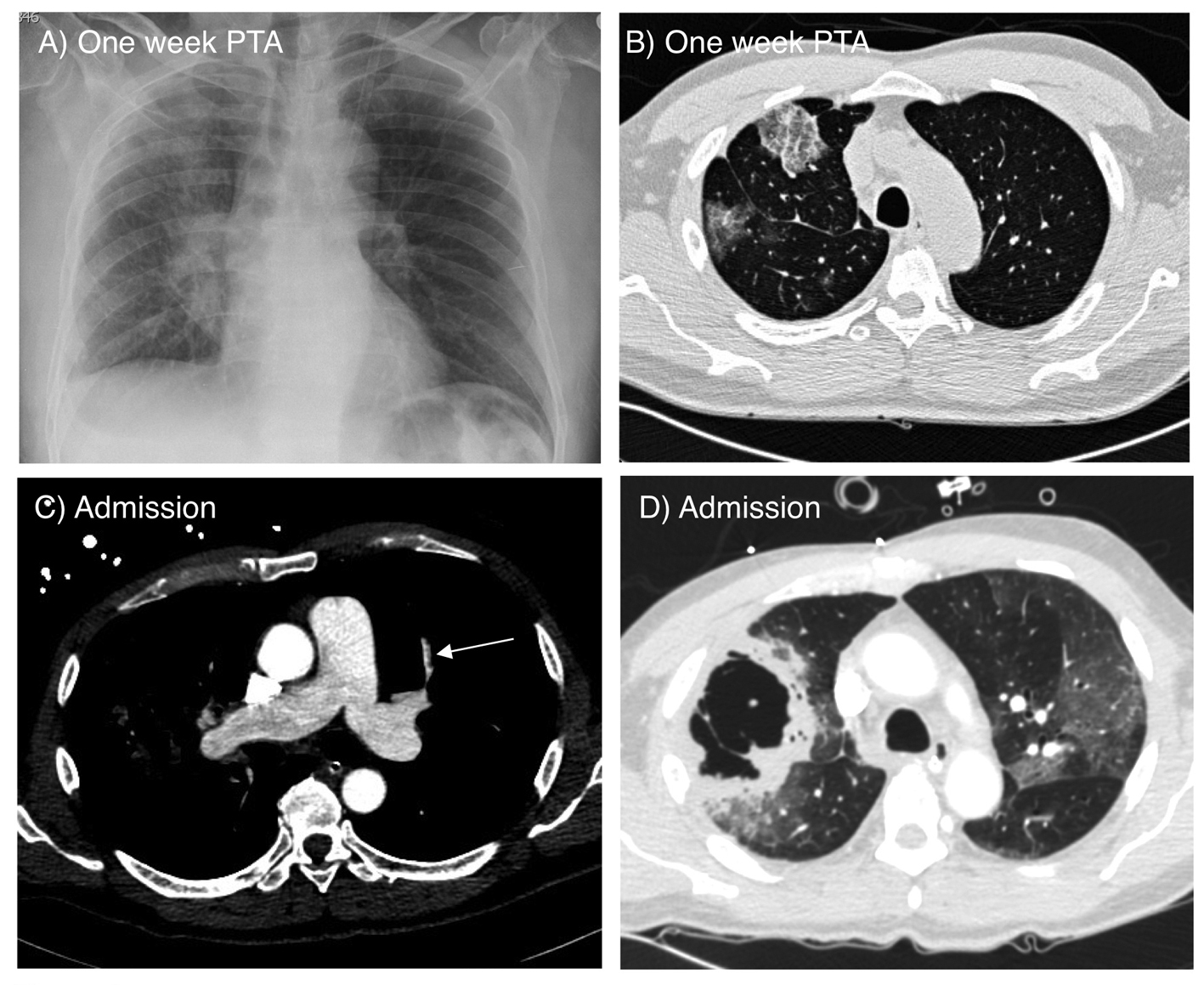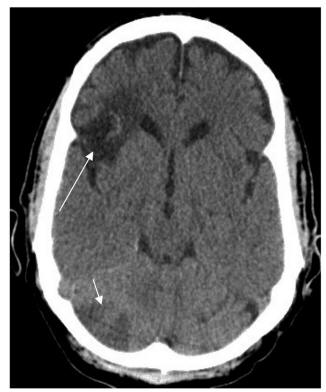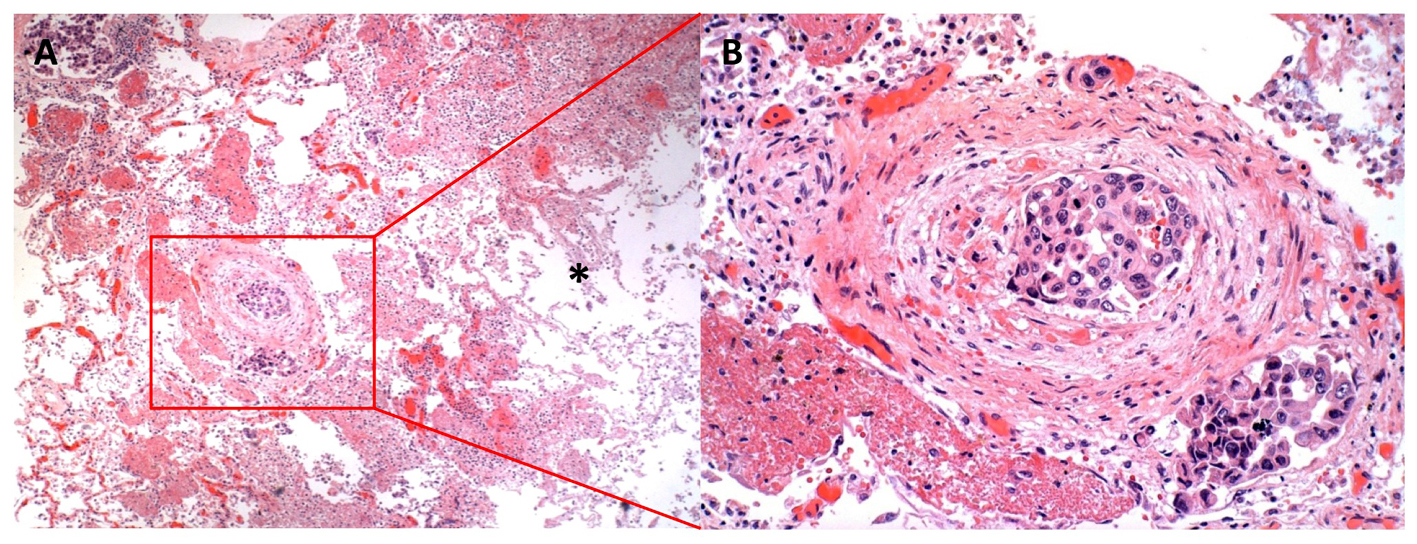
Figure 1. A) Chest radiograph on admission showing ground glass opacity and infiltrate in the right superior lung field and right perihilar area. B) Axial CT scan of the chest obtained one week prior to admission showing ground glass opacifications in the right middle and lower lobes. C) CT angiogram on admission showing a small embolus in a pulmonary artery branch of the left upper lobe (arrow). D) Lung window image of the CT angiogram demonstrating two adjacent large thick wall cavities in the right middle and lower lobes, corresponding to the ground glass opacities seen one week prior. There are also bilateral ground glass opacities.

